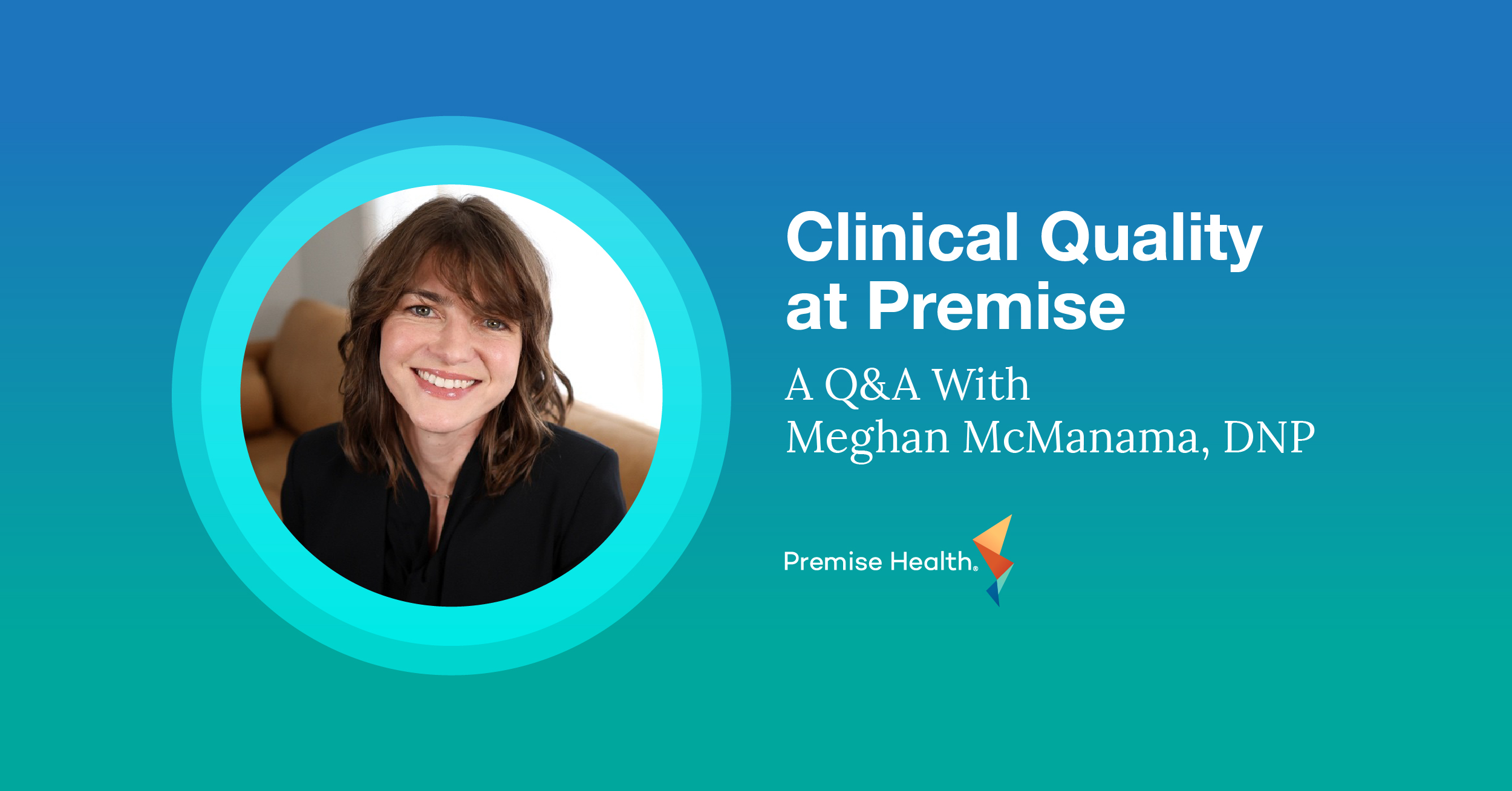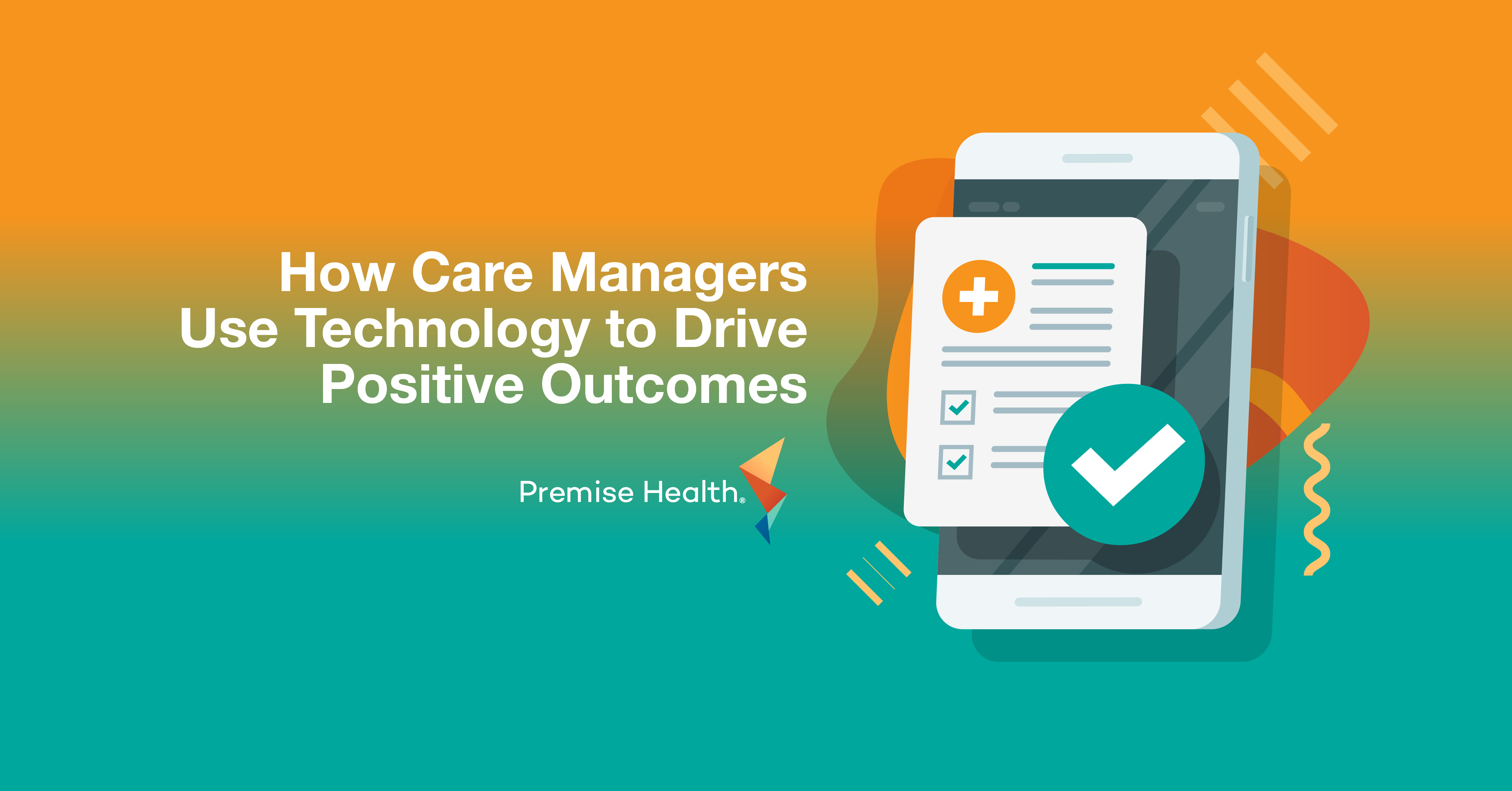What is a Care Manager? Meet the Team Member Helping Patients Get Their Health on Track
Few organizations are aware that only 30 percent of their population accounts for roughly 95 percent of spend, and even fewer have a strategy for how to reach this population.1 Often, these are the employees and dependents who are silently suffering with chronic conditions like diabetes, high cholesterol, and high blood pressure without the support or education they need to change their lives.
Luckily, that’s where care managers can make an impact. Care managers are highly skilled healthcare clinicians – registered nurses who have additional training and experience working with patients that have chronic conditions – who develop personalized treatment plans paired with ongoing support and follow-up care. These highly skilled professionals work together with the primary care team to support their patients, taking the time to develop relationships while investing in their overall health and wellbeing.
 Field Care Manager Katie Kunz was eager to return to her passion of working with patients when she started caring for members at Premise Health client Digi-Key in 2021. We sat down with her to unpack what care management looks like day-to-day and understand how it empowers members to meet their goals and live happier, healthier lives.
Field Care Manager Katie Kunz was eager to return to her passion of working with patients when she started caring for members at Premise Health client Digi-Key in 2021. We sat down with her to unpack what care management looks like day-to-day and understand how it empowers members to meet their goals and live happier, healthier lives.
What are the main responsibilities of a Care Manager?
Care managers play a major role in identifying and supporting at-risk members. We take a close look at data to identify members that would potentially benefit from care management for help with things like chronic conditions, behavior change education, or who just need a touchpoint for getting their health back on track.
Then the next big piece is proactively reaching out to them to get them engaged and participating in the program. This usually starts with a conversation on the phone; a lot of members aren’t aware that care management would benefit them without this call.
Usually, after that conversation, depending on what the member needs, they’ll meet with me one-on-one. We’ll use that time to discuss their health concerns and see if there’s room for improvement with their chronic conditions, or if they need support with other things like taking control of their finances, understanding the benefits their employer offers, or even providing food for their family. It’s a well-rounded program, looking at the person as a whole instead of just one particular concern.
What does a typical interaction between a Care Manager and a member look like?
I work with a wide variety of members – a lot of times they come to me with chronic conditions like diabetes, hypertension, hyperlipidemia, COPD, or asthma. Many are looking to lose weight so they can get their chronic conditions under control and lead a healthier life.
During an appointment, we’ll review their latest lab work and discuss where they are and where we’d like to see their health metrics go. As for medications, we’ll walk through what they’re taking, discuss any side effects, and answer questions. For example, if a member is on statins for high cholesterol and continues to see elevated levels, I’ll work to educate them and encourage lifestyle changes that will help them decrease their levels. Education is crucial when it comes to care management, as we’re making sure they have the information they need to manage their conditions.
The most amazing part of my job is the trust and relationships I get to build with the members. When a member gives their provider that trust, knowing that they’re being cared for, feeling confident that their health concerns are being monitored, and having someone to talk about things that they wouldn’t necessarily talk about with other people is life-changing for so many of my patients. As a provider, you end up growing these relationships quickly because you start off meeting with them bi-weekly to monthly and get to know them well.
We often set goals for people to meet between appointments, then we discuss them at their next visit. In this role it’s important not to push or dictate what changes the individual needs to make but promote self-efficiency and encourage members to be actively involved with their care by taking part in the decision-making process. It’s having a discussion around what people find challenging – but not too challenging – to accomplish before their next visit. Like for weight loss, it might be striving to drink four 8-ounce glasses of water a day over a couple of weeks.
Depending on the patient and their needs, we’ll eventually transition to checking in every one to three months. When members “graduate” from care management, we want them to have the confidence and capability to manage their condition on their own. However, even if they graduate, we stay in touch with them every six months to a year, so if they hit a roadblock or regress, they can get back into the program knowing they have support through the clinic.
How do Care Managers work with other providers on the care team?
A big component of care management is working with other providers to make sure the patients get the best quality care.
We communicate and work together with primary care providers, making it possible for members to get care from a consistent, integrated care team versus being referred to another provider in the community. Whether they need to see a provider immediately or are due for a preventive screening, we make sure they’re seen at an opportune time.
Why should employers consider Care Management as they invest in their people’s health?
When an employer implements care management, they’re not just focusing on the people coming through the doors of their wellness center. Care management leverages multiple data sets across the population to identify members that could benefit from one-on-one support and engage them. This is often through virtual means that go beyond our clinic walls.
Because we’re educating people on how to manage their conditions, members save a lot of money and improve their outcomes. As a result, it’s a cost saver for the employer as well. Plus, members can reach out to their care manager with a question and come into the wellness center versus going to the ER or the urgent care – another large driver of costs.
Can you share a story about the work you do?
In August 2021, we reached out to a member who was identified as high-risk, and she was willing to meet for an initial Care Management appointment. During her first visit, we talked about her lifestyle and chronic conditions. She shared that she was primarily looking to focus on weight management as she had struggled with weight issues throughout her life and said that she was the heaviest she had been, with a BMI of 57.95. In reviewing her recent labs – which were ordered per her behavioral health provider – we also noted that her fasting glucose level was elevated. Together, we discussed the importance of follow-up on her recent results, and I helped her schedule an appointment with one of our onsite providers because she didn’t have a primary care provider at that time.
At the appointment, she was diagnosed with type 2 diabetes. With the new diabetes diagnosis, she was further motivated to initiate changes to improve her health. She initially came in on a bi-weekly basis for education purposes, support, and accountability. She took the initiative to re-establish a relationship with her weight management provider and started on weight loss medication. She also started incorporating healthy eating habits and exercise into her routine, and when she met obstacles, we came up with a plan to help her overcome the barrier and continue to work towards her goal of living a healthier lifestyle.
With encouragement and support she has continued to successfully lose weight on her own with lifestyle changes along with weight loss medication. She has now reached a normal A1C level of 5.1, no longer requires diabetic medication to manage her diabetes, and now has a BMI of 47.31. She continues to maintain healthy eating habits as well as exercise, which is now part of her everyday life. Our visits aren’t as often as they were, but as her care manager, I continue to be available as she navigates her health and wellbeing journey.
What do you wish people knew about being a Care Manager?
The biggest part of being a care manager is remembering to be patient with people. Often, the first step is agreeing to receive help, which inevitably evolves to the point where they are ready to improve and focus on their health and wellbeing. They still meet and eventually get on board, but the biggest key is patience and helping them to better themselves. We must focus on the positive things they’ve done to make a difference. It could be as simple as increasing their water intake by a cup of water. Small wins still benefit your health.
Our care managers are taking the lead in helping Premise Health members take control of their health in centers across the U.S. Are you passionate about helping people live happier, healthier lives? See open career opportunities here. If you’re ready to take the first step to bringing a care management solution to your people, get in touch today to get started.
1Premise Health Book of Business Calculations
Next on industry insights.

Provider Dispensing and its Role in a Better Care Experience
Read the Blog
Clinical Quality at Premise: A Q&A With Meghan McManama, DNP
Read the Blog